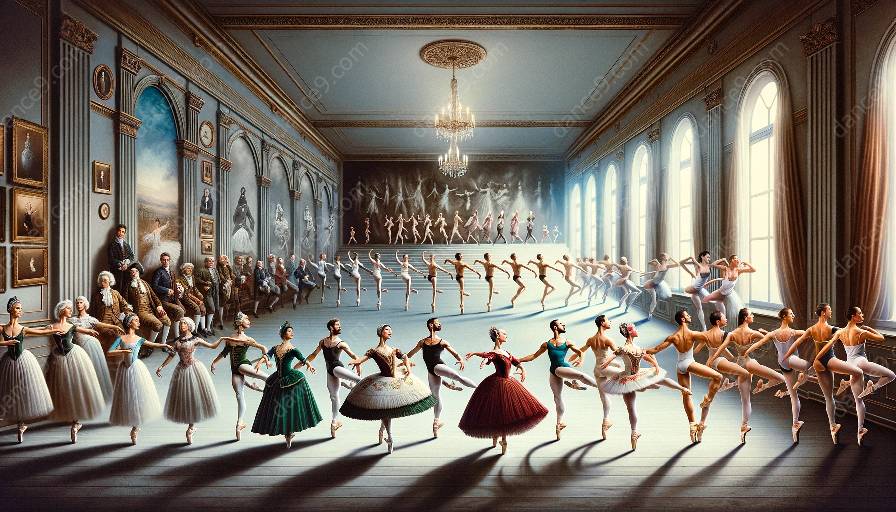Ballet techniques have evolved over centuries, influenced by the political and social contexts in which they developed. The evolution of ballet techniques is closely linked to the historical, political, and social factors that shaped the art form. Understanding these contexts is crucial for appreciating the complexity and richness of ballet as a cultural phenomenon.
The Historical Evolution of Ballet Techniques
Ballet has its roots in the courts of Renaissance Italy, where it was a popular form of entertainment among the nobility. Its early development was influenced by courtly etiquette, social hierarchies, and the prevailing political power structures. As ballet spread across Europe, it adapted to reflect the values and norms of different societies, leading to the emergence of distinct national styles.
French Influence
In the 17th century, ballet became closely associated with the French court, particularly during the reign of Louis XIV. The codification of ballet techniques and the establishment of the Royal Academy of Dance in France reflected the influence of the monarchy on the art form. This association with the aristocracy and the court influenced the technical and stylistic development of ballet.
Russian Influence
During the 19th century, ballet underwent significant transformations in Russia, with the patronage of the imperial court and the influence of figures like Marius Petipa. The social and political upheavals of the time, including the abolition of serfdom and the rise of revolutionary movements, shaped the content and form of classical ballet, as seen in works like 'Swan Lake' and 'The Sleeping Beauty.'
Political and Social Contexts in Ballet Techniques
The political and social contexts of the time profoundly influenced the development of ballet techniques. Political events, social movements, and cultural shifts all left their mark on the art form, shaping the way dancers moved and expressed themselves on stage.
Impact of War and Conflict
War and conflict have had a profound impact on ballet techniques. The disruptions caused by wars often led to the migration of dancers, choreographers, and teachers, resulting in a cross-pollination of styles and techniques. Additionally, ballet was often used as a form of propaganda during times of war, reflecting the political aims and ideologies of the ruling powers.
Social Change and Innovation
Periods of social change, such as the industrial revolution and the rise of urban centers, also impacted ballet techniques. Innovations in stagecraft, the use of new materials for costumes and footwear, and the changing role of women in society all influenced the technical and aesthetic aspects of ballet.
Relevance to Ballet History and Theory
Studying the political and social contexts in ballet techniques enriches our understanding of ballet history and theory. It provides insights into the motives behind artistic choices, the evolution of dance vocabularies, and the ways in which ballet has reflected and responded to the world around it.
Intersection of Art and Society
The intersection of art and society is a central theme in ballet history and theory. By examining the social and political climates in which specific ballet techniques emerged, we gain a deeper understanding of how ballet has both reflected and challenged prevailing norms and values.
Evolution of Gender Roles
One significant aspect of ballet history and theory is the evolution of gender roles in ballet. The changing status of women in society has had a profound impact on ballet techniques, leading to new movements and expressions previously unseen in classical ballet.
Conclusion
The study of political and social contexts in ballet techniques is essential for a comprehensive understanding of ballet as an art form. By examining the historical, political, and social forces that have shaped ballet techniques, we gain valuable insights into the evolution of ballet, its connections to wider cultural trends, and its significance as a reflection of human experience.





























